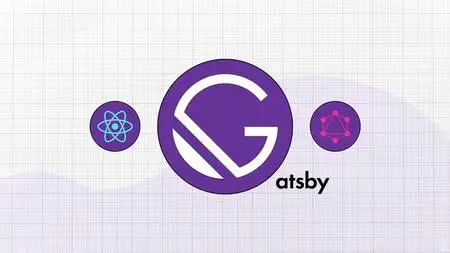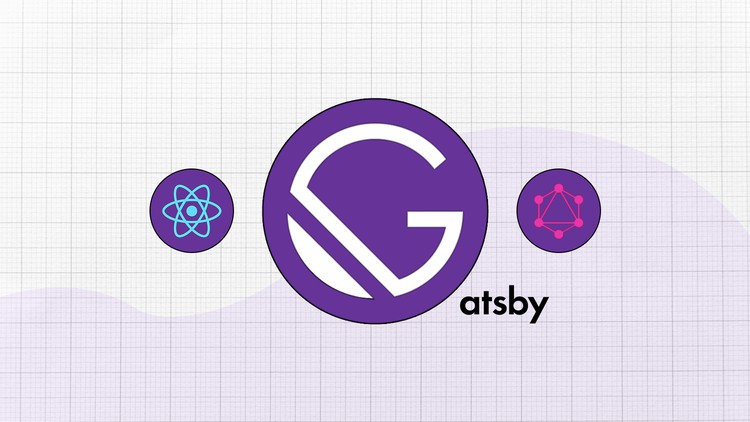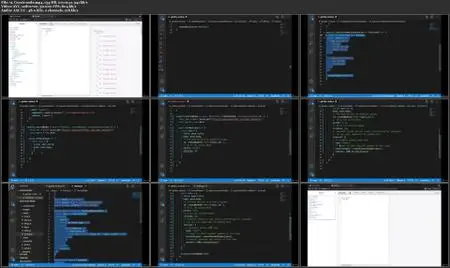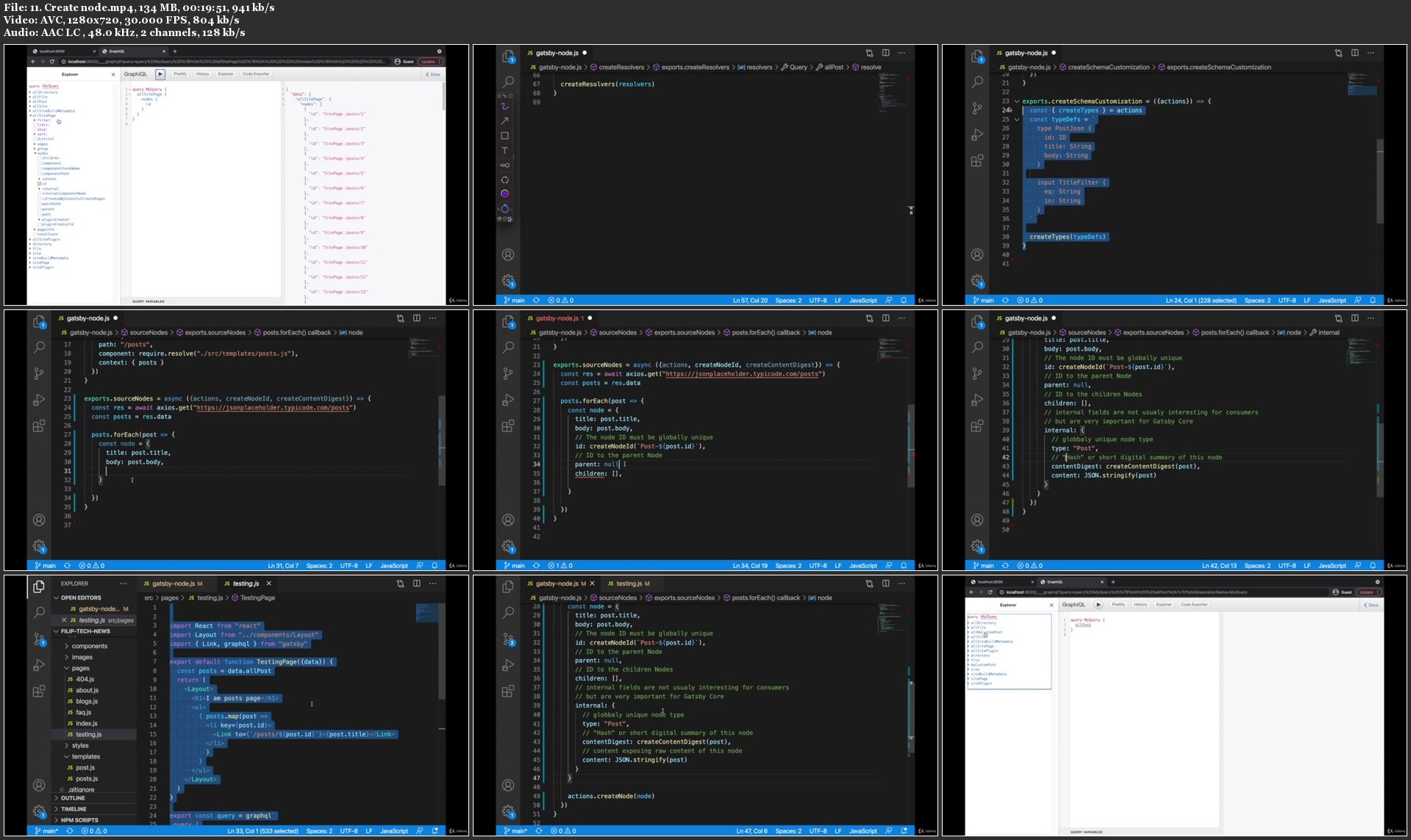Gatsby JS Developer's Guide - Important Parts & Blog App
.MP4, AVC, 1280x720, 30 fps | English, AAC, 2 Ch | 12h | 5.25 GB
Instructor: Filip Jerga
.MP4, AVC, 1280x720, 30 fps | English, AAC, 2 Ch | 12h | 5.25 GB
Instructor: Filip Jerga
Learn popular Gatsby JS(Gatsby v3) framework. Use React/GraphQL to build your own blog page with JAMStack architecture.
What you'll learn
Build Gatsby JS apps on your own
Build static page apps with modern technologies
Understand meaning and benefits of JAMStack
Use GraphQL to your advantage
Requirements
Minimal Javascript or other programming language knowledge
React JS Basics
Description
What is Gatsby JS?
GatsbyJS is a React-based, GraphQL powered static site generator. It uses powerful preconfiguration to build a website that uses only static files for incredibly fast page loads, service workers, code splitting, server-side rendering, intelligent image loading, asset optimization, and data prefetching.
Are there any requirements?
Basic React JS knowledge.
What this course cover?
This course is covering all you need to start working on your own Gatsby JS projects. Students of this course will be learning everything by working on real features building their own Blogging application.
Gatsby JS has a rich ecosystem and requires an initial time investment. That’s why I created this guide where you can find everything in one place.
Short Curriculum
Basics of Gatsby JS and initialization of the project. Explanation of folder structure and instruction on how to create new pages.
Templating system, Different types of stylings, and ways how to pass data to the pages.
Basics of GraphQL, construction of custom queries, resolvers, arguments, and custom types.
Node architecture and creation of new nodes.
Plugin system. Explanation of source and transformer plugins. Sourcing data from a local filesystem and rendering markdown files into actual HTML pages.
Filesystem route API
Pagination feature. Construction of queries to get pagination data to render static pagination pages.
Search feature. Explanation on why do you need a search index and what is a search engine?
SEO search engine optimization improvements. Use of different meta tags and data to get the best search results. Usage of Open graph tags.
RSS feature. Explanation of really simple syndication and creation of XML file. Subscribing to the blog page through RSS aggregators.
Deployment to Gatsby cloud. Pushing the code to Github repo. Previewing the application on the internet.
PWA features. Explanation of progressive web application, offline support, and installation of the app like a native one.
Context theme provider. How to use context providers and what is the best spot to implement them.
Who this course is for:
People looking for the practical Gatsby development guide
Beginner developers eager to start working on web apps
Experienced developers discovering new development opportunities





